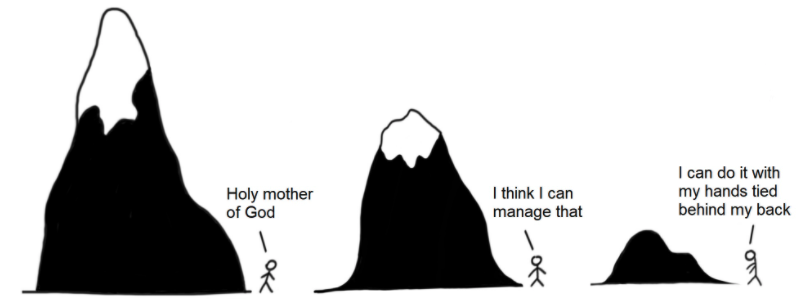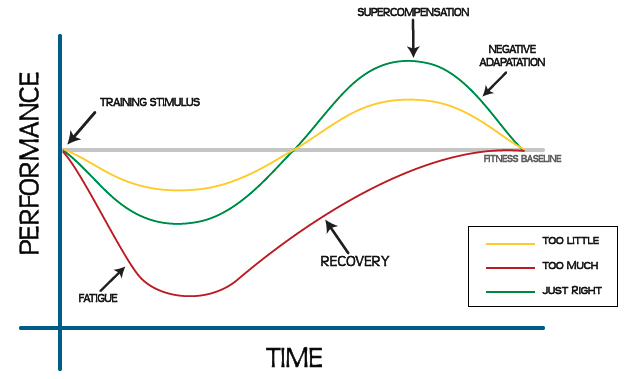Finding motivation can be difficult. Maintaining motivation over a prolonged period of time can be EXTREMELY difficult!
I struggle with it too. I struggled to wake up at 5am to write this post. But I did it, and you’re reading it.
How do top performers constantly maintain this level of motivation required to succeed? What is the secret that they know that we potentially don’t?
The Goldilocks Rule: A Story
In 1955, Disneyland had just opened in Anaheim, California, when a ten-year-old Steve Martin walked in and asked for a job. He got one selling guidebooks for $0.50 apiece.
Within a year, he had transitioned to Disney’s magic shop, where he would perform tricks, however he soon discovered that what he loved was not performing magic but was just to perform.
Soon thereafter, he started performing in clubs around Los Angeles. He was rarely on stage for more than five minutes. Most of the people in the crowd were too busy drinking or talking with friends to pay attention.
It was a tough school and was by no means glamorous – but he was plying his trade and learning.
He continued in this vein for another decade:
- experimenting,
- adjusting, and
- practicing.
By the mid-1970s, Martin had worked his way into being a regular guest on The Tonight Show and SNL.
Finally, after nearly fifteen years of work, he rose to fame. He catapulted to the top of his genre and became one of the most successful comedians of his time.
In his words, “10 years spent learning, 4 years spent refining, and 4 years as a wild success.”
How did Steve Martin manage to stay the course while the rest of us seem to fall by the wayside?

What Is The Goldilocks Rule?
At its core, its about Managing difficulty
The Goldilocks Rule states that humans experience the most motivation when working on tasks that are on the edge of their current abilities. These tasks or events aren’t too hard or too easy but a perfect balance.

We as humans love to be challenged. But not too much!
Imagine this:
If you love golf and try to play a serious game of matchplay against a six-year-old, you will quickly become bored. It’s too easy. You’ll win every hole.
In contrast, if you play a professional player like Tiger Woods, you will quickly lose motivation because the match is too difficult (although really cool to be playing with Tiger!).
Now consider playing golf against someone who is of similar skill. As the match progresses, you win a few holes and you lose a few. You have a good chance of winning, but only if you really try. You really need to hone your skills and focus. This is a challenge of just manageable difficulty and it is a prime example of the Goldilocks Rule.
How You Can Apply The Goldilocks Rule
Working on challenges that are at the correct level of difficulty is not only motivating, but also to be a major source of happiness.
One of the important sources of human happiness is working on tasks at a suitable level of difficulty, neither too hard nor too easy
Psychologist Gilbert Brim

Not only does it bring about happiness, but it also leads to vast increases in performance (this state where happiness and performance meet is sometimes referred to as ‘flow’).
To reach this zone of peak performance, however, you not only need to work on endeavours at the right degree of difficulty, but also measure your immediate progress.
Seeing yourself make progress in the moment is incredibly motivating.
Measurement looks different in each facet you are trying to conquer but is critical for achieving a blend of motivation and happiness.
In golf, you get immediate feedback based on whether or not you win the hole.
Regardless of how it is measured, the human brain needs some way to visualize our progress if we are to maintain motivation.
We need to see our wins
Two Steps to Motivation
To simplify how to stay motivated for a sustained period of time:
- Apply The Goldilocks Rule and work on tasks of just manageable difficulty.
- Measure your progress and receive immediate feedback whenever possible.
Conclusion
Wanting to improve your life is great – everyone wants this.
Sticking with your plan on how to achieve this – not so much.
If you want to stay motivated for good, then start with a challenge that is just manageable, measure your progress, and rinse and repeat.
